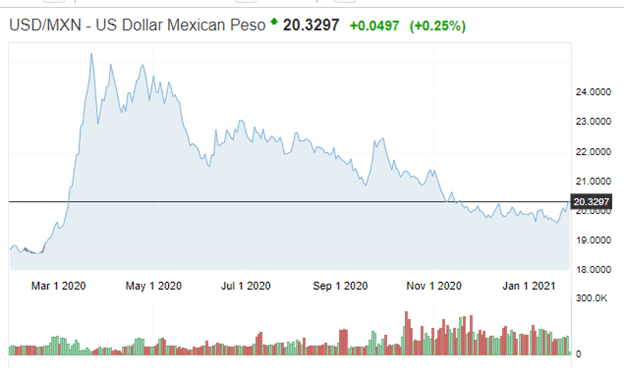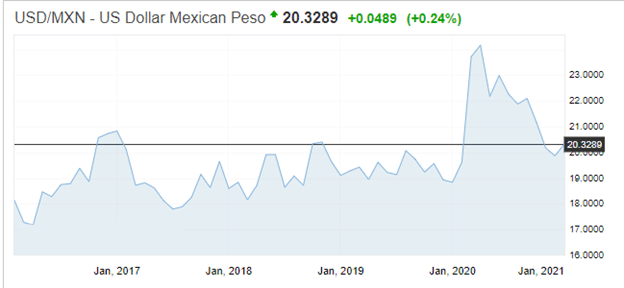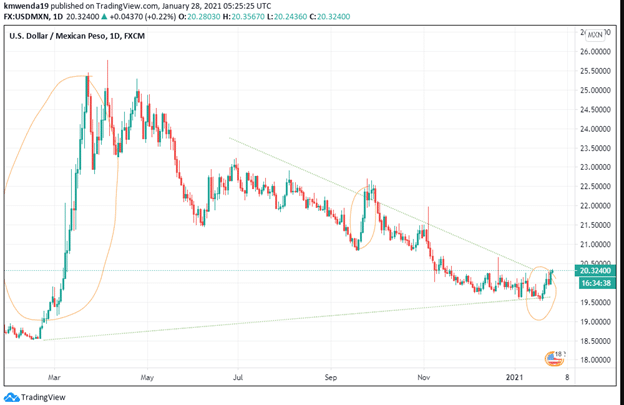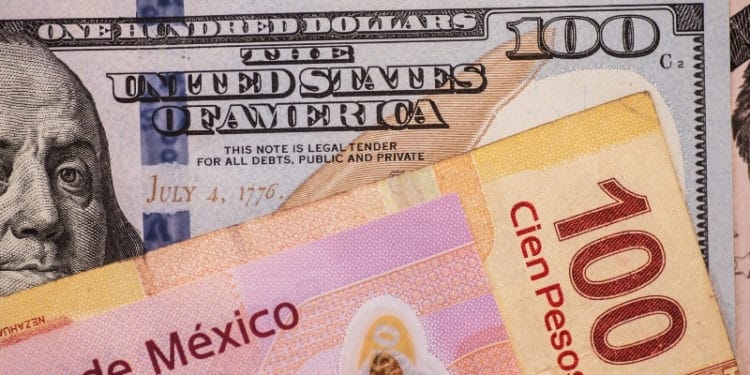- The Mexican peso declined against the dollar as the GDP fell 8.8% in 2020.
- The Biden administration is expected to improve on the USMCA deal. The agreement made the dollar rise to an all-time high of 24.165 against the peso.
- Mexico may seek trade alliances with China and Russia post NAFTA due to weakened US dominance in South America.
On January 27, 2021, the USD/MXN trading pair rose to its November 2020 highs at 20.3010 following a slight weakening of the Mexican peso. The gross domestic product (GDP) of Mexico declined 8.8% following contractions in overall output. The GDP stood at $1.269 trillion in 2019 before the pandemic hit the South American powerhouse. Mexico’s exports to the US have shrunk into 2021, causing an increase in unemployment, especially in the agricultural industry. However, the new Biden administration is expected to improve trade relations with Mexico, which will help the US dollar recover from the 2020 lows.

Trade relations
Mexico became the top trade partner of the United States into 2020, with the total trade value in 2019 reaching $614.5 billion (+0.48% from 2018). The US decreased its trade with Mexico by 1.5% to settle at $4.14 trillion in 2019. The former Trump administration was keen to reduce investments in countries like China, where trade value dropped $100.95 billion.
Total exports from Mexico to the US totaled $358 billion (+$13.7 billion), + 4.0% YoY. In turn, Mexican imports from the US fell to $256.6 billion (-$9.4 billion), a decline of 3.5% YoY. The trade deficit of goods between the two countries rose to $101.4 billion (+$22.8 billion), a 29.5% increase YoY. We must consider that both countries were operating under the North American Free Trade Agreement (NAFTA) before 2020. With a deficit of more than $100 billion, the USD/MXN currency fell to a 5-year low of 18.8428 in favor of Mexico on January 1, 2020.
The US began renegotiating the NAFTA deal that was seen as an enhancer of unemployment with US firms moving to Mexico and suppressing wages. Together with Canada (the second largest US trade partner), they formed the USMCA that came to force in July 2020. News of the successful roll-out of the USMCA before the pandemic hit the trade sector, making the USD/MXN currency rise to an all-time high of 24.165.

As of 2019, Mexico’s inflation rate was 3.64%, with projections showing it may reach 3% in 2025. To help strengthen the battered economy and increase growth, the Central Bank of Mexico reduced the interest rates by 45.16% from 7.75% in August 2019 to 4.25% in August 2020. The economy is expected to grow by 2.8% and GDP at 3.8% in Q4 2021. The peso may take a slight hit against the dollar if it proceeds to increase China and Russia investments compared to the US.
With recovery pegged on vaccine rollout, Mexico is dependent on China. The latter has promised up to 35 million doses. The dominance of the US under NAFTA has been replaced by the USMCA that may allow Mexico to seek relations with China, and Mexico is also in an election year.
Technical analysis

There is high investor buying activity, as shown by the 14-day RSI at 63.995. The 14-day average true range (ATR) indicates low volatility of the USD/MXN trading pair at 0.0537. The 20-day simple moving average (SMA) is at 20.2441, while the EMA is at 20.2430. We may see a slight violation of the support as the 200-day SMA moves to 19.8681.







